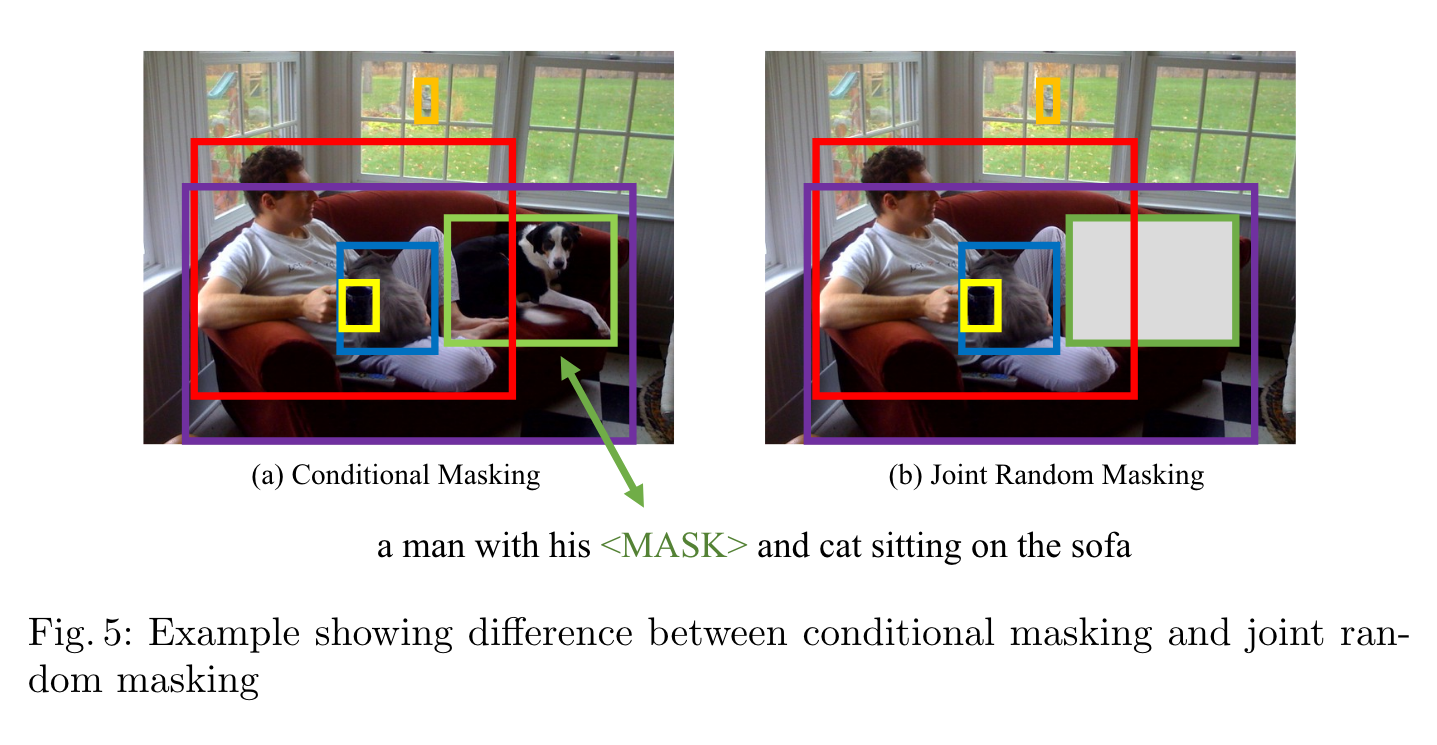UNITER UNiversal Image-TExt Representation Learning
[multimodal deep-learning uniter mask-language-modeling mask-region-modeling image-text-matching optimal-transport word-region-alignment fast-rcnn bert video-bert clip-bert vil-bert vlbert visual-bert lxm-bert uniter This is my reading note for UNITER: UNiversal Image-TExt Representation Learning. This paper proposes a vision language pre training model. The major innovation here is it studies the work region alignment loss as well as different mask region models task.
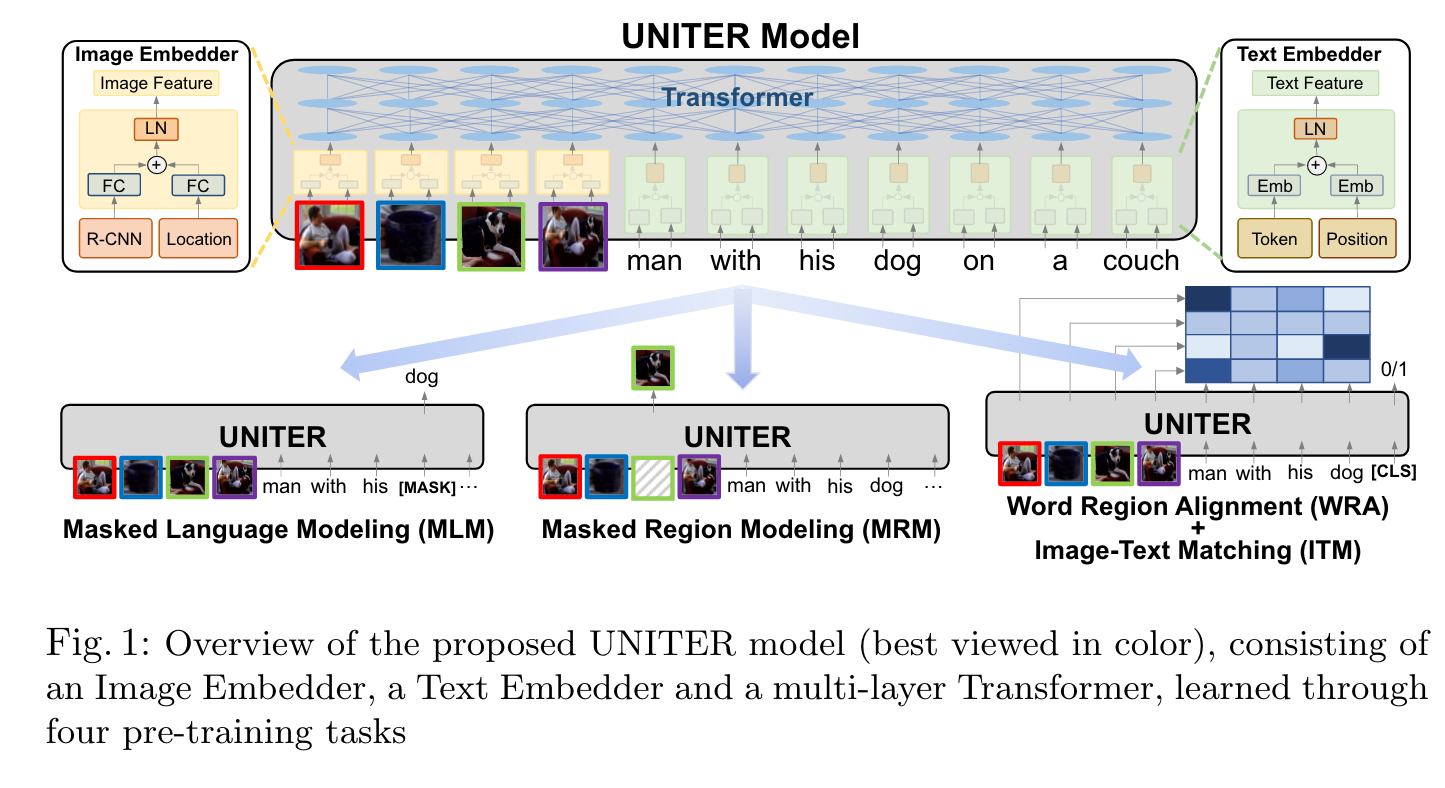
Introduction
We design four pre-training tasks: Masked Language Modeling (MLM), Masked Region Modeling (MRM, with three variants), ImageText Matching (ITM), and Word-Region Alignment (WRA). Different from previous work that applies joint random masking to both modalities, we use conditional masking on pre-training tasks (i.e., masked language/region modeling is conditioned on full observation of image/text). In addition to ITM for global image-text alignment, we also propose WRA via the use of Optimal Transport (OT) to explicitly encourage finegrained alignment between words and image regions during pre-training. (p. 1)
we introduce a novel WRA pre-training task via the use of Optimal Transport (OT) [37,7] to explicitly encourage fine-grained alignment between words and image regions. Intuitively, OT-based learning aims to optimize for distribution matching via minimizing the cost of transporting one distribution to another. (p. 3)
UNiversal Image-TExt Representation
Model Overview
Specifically, in Image Embedder, we first use Faster R-CNN2 to extract the visual features (pooled ROI features) for each region. We also encode the location features for each region via a 7-dimensional vector. Note that each time we only mask one modality while keeping the other modality intact. To pre-train UNITER with these tasks, we randomly sample one task for each mini-batch, and train on only one objective per SGD update. (p. 5)
Pre-training Tasks
Word-Region Alignment (WRA)
We use Optimal Transport (OT) for WRA, where a transport plan T ∈ R^{T ×K} is learned to optimize the alignment between w and v. (p. 6)

| where Π(a, b) = {T ∈ R^{T ×K}_{+} | T1_m = a, T^T 1_n = b}, 1_n denotes an n-dimensional all-one vector, and c(w_i, v_j ) is the cost function evaluating the distance between w_i and v_j . In experiments, the cosine distance c(w_i, v_j ) = 1 − \frac{w^T_i v_j}{ | w_i | _2 | v_j | _2} is used. After solving T, the OT distance serves as the WRA loss that can be used to update the parameters θ. (p. 7) |
Masked Region Modeling (MRM)
1) Masked Region Feature Regression (MRFR) MRFR learns to regress the Transformer output of each masked region v(i) m to its visual features. (p. 7) 2) Masked Region Classification (MRC) MRC learns to predict the object semantic class for each masked region.Thus, we use the object detection output from Faster R-CNN, and take the detected object category (with the highest confidence score) as the label of the masked region (p. 7) 3) Masked Region Classification with KL-Divergence (MRC-kl) MRC takes the most likely object class from the object detection model as the hard label (w.p. 0 or 1), assuming the detected object class is the groundtruth label for the region. However, this may not be true, as no ground-truth label is available. Thus, in MRC-kl, we avoid this assumption by using soft label as supervision signal, which is the raw output from the detector (p. 7)
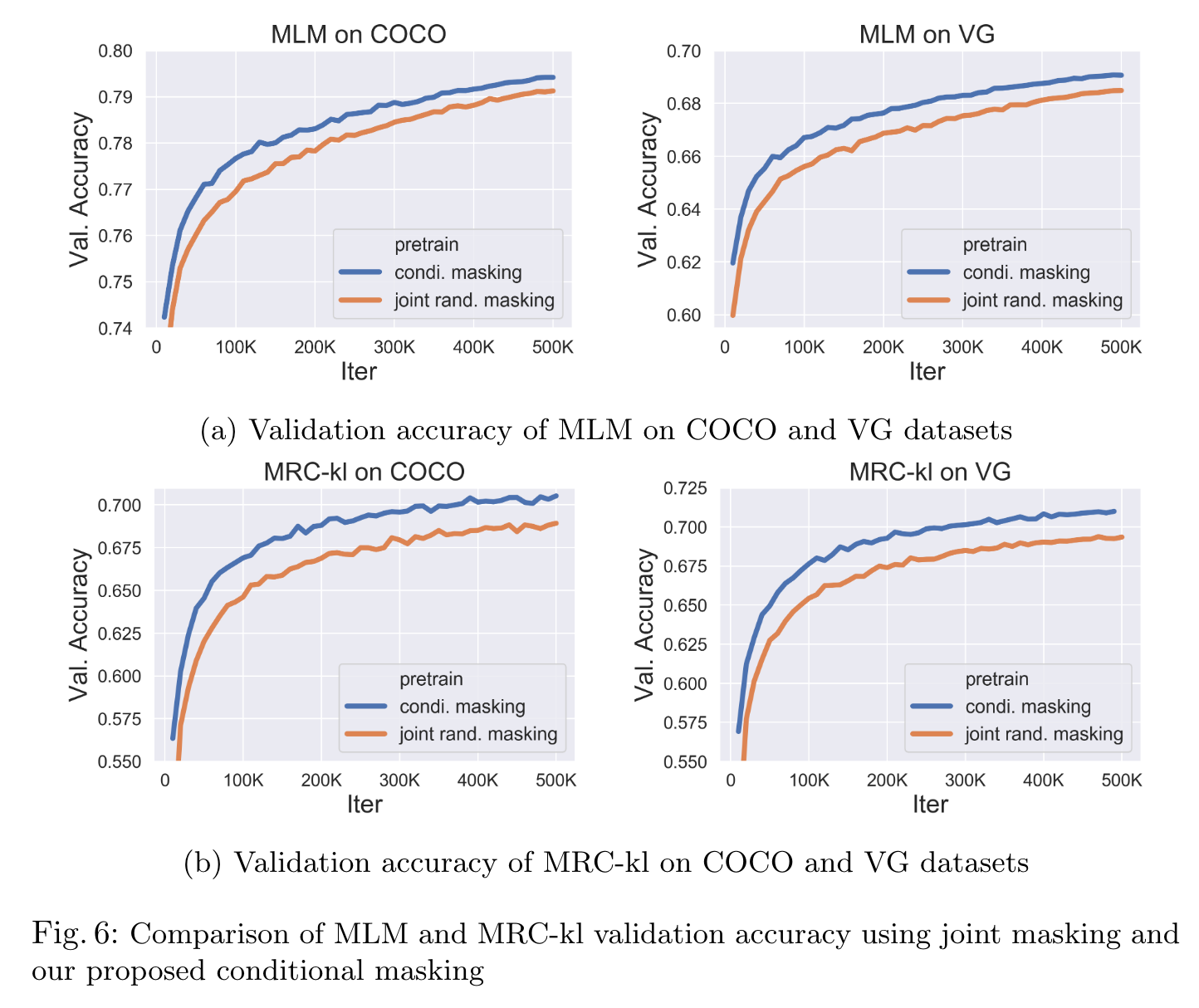
WRA mostly benefits downstream tasks relying on region-level recognition: (p. 23)

Pre-training Datasets

Experiments
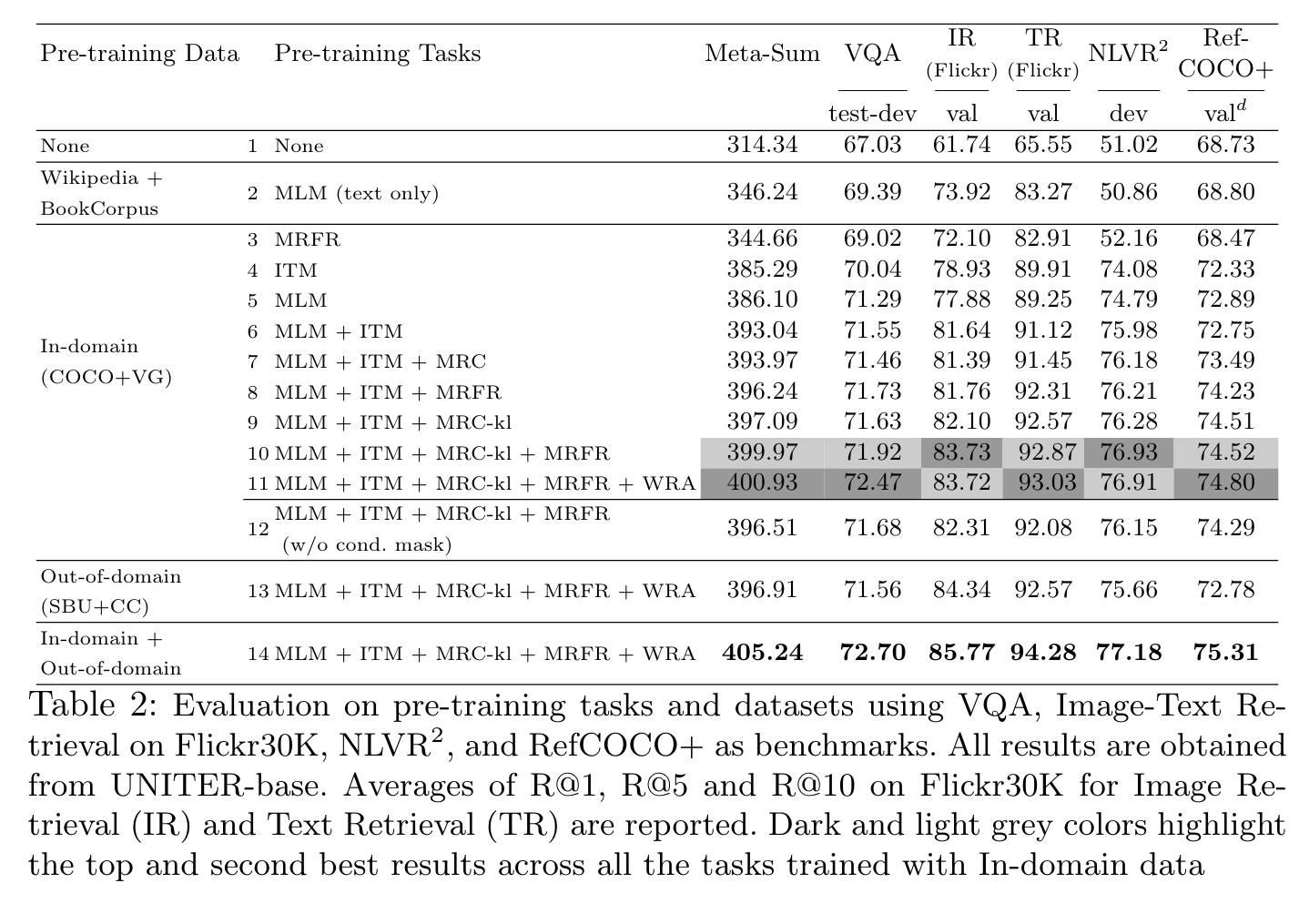
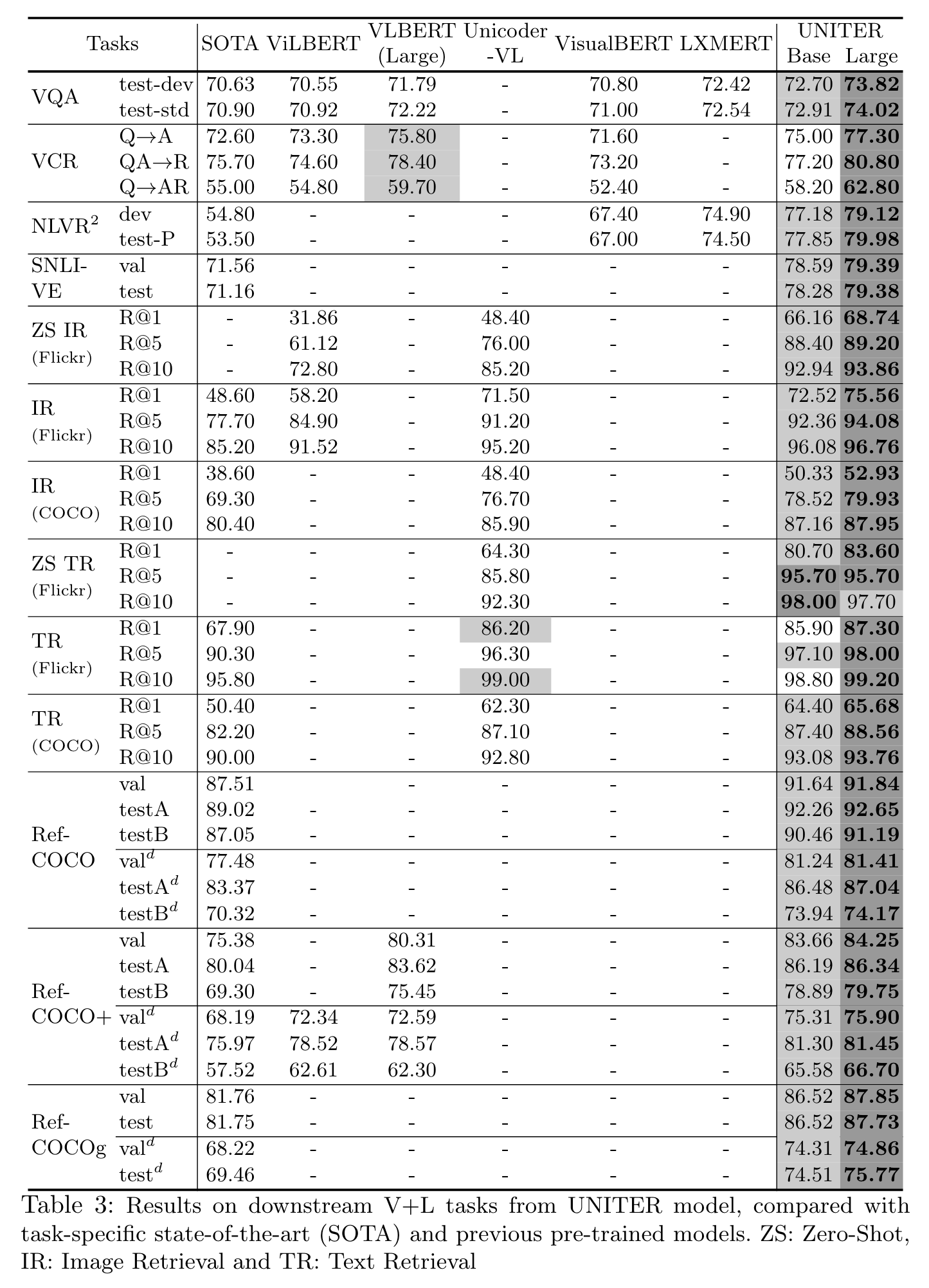
Visualization
- Vertical: attention to special tokens [CLS] or [SEP];
- Diagonal: attention to the token/region itself or preceding/following tokens/regions;
- Vertical + Diagonal: mixture of vertical and diagonal;
- Block: intra-modality attention, i.e., textual self-attention and visual selfattention;
- Heterogeneous: diverse attentions that cannot be categorized and is highly dependent on actual input;
- Reversed Block: inter-modality attention, i.e., text-to-image and image-totext attention. (p. 13)
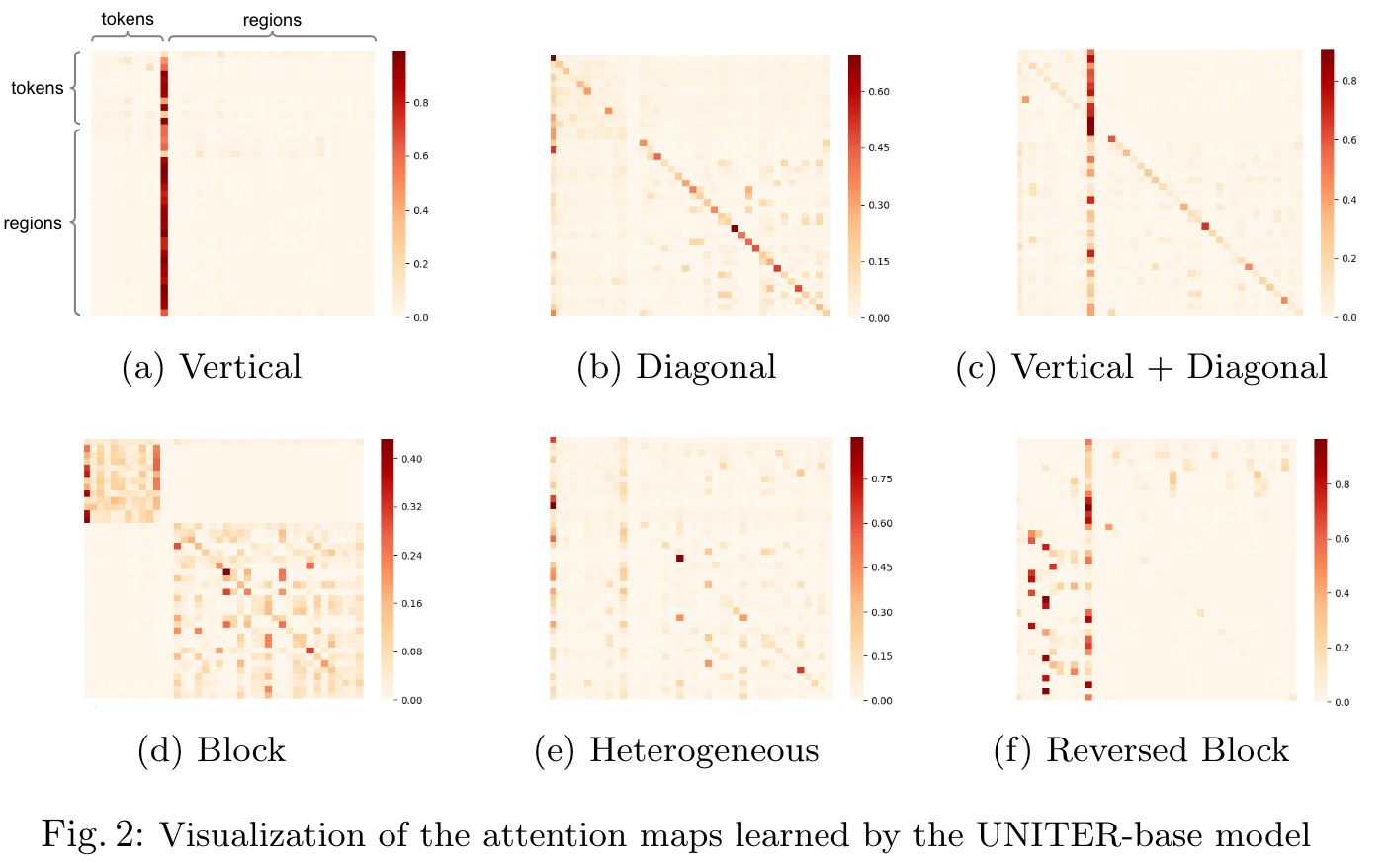
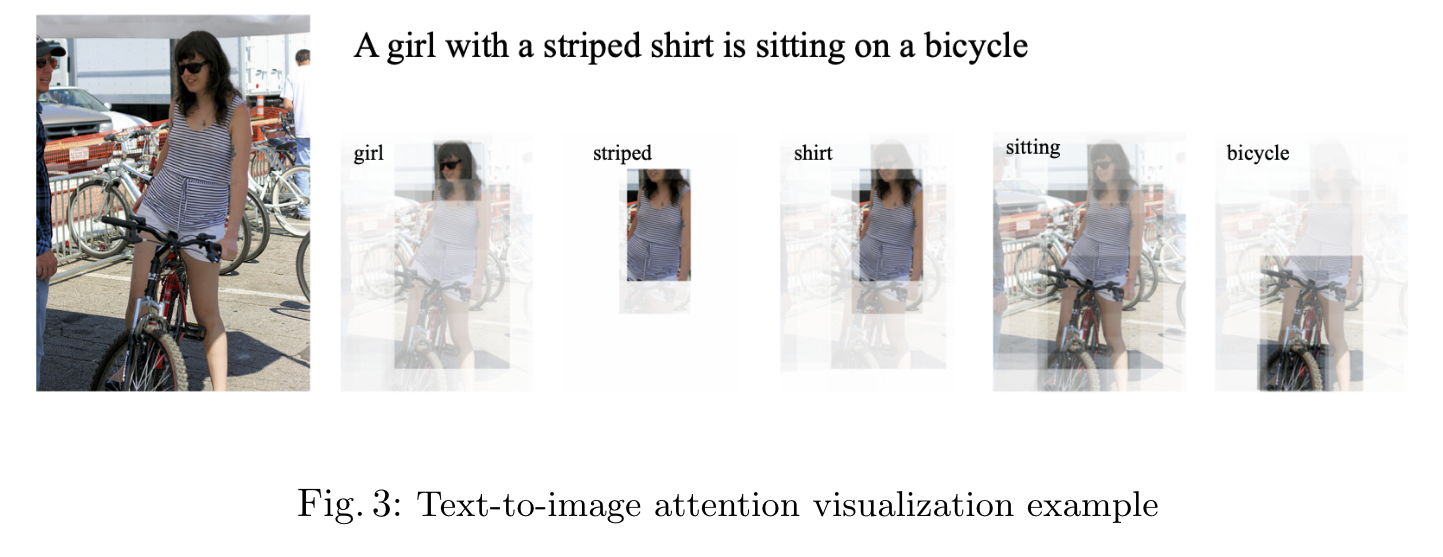
Ablation
